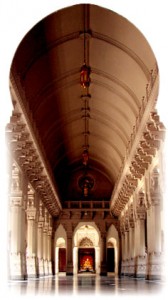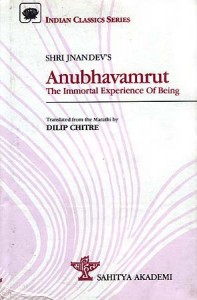Tantra
Mountain Minorities and Indigenous Peoples

NGO Development Projects Active in Tibet
About ICIMOD – The International Centre for Integrated Mountain Development, ICIMOD, is a regional knowledge development and learning centre serving the eight regional member countries of the Hindu Kush-Himalayas – Afghanistan, Bangladesh, Bhutan, China, India, Myanmar, Nepal, and Pakistan – and based in Kathmandu, Nepal.
Globalisation and climate change have an increasing influence on the stability of fragile mountain ecosystems and the livelihoods of mountain people. ICIMOD aims to assist mountain people to understand these changes, adapt to them, and make the most of new opportunities, while addressing upstream-downstream issues. We support regional transboundary programmes through partnership with regional partner institutions, facilitate the exchange of experience, and serve as a regional knowledge hub. We strengthen networking among regional and global centres of excellence. Overall, we are working to develop an economically and environmentally sound mountain ecosystem to improve the living standards of mountain populations and to sustain vital ecosystem services for the billions of people living downstream – now, and for the future.
International Mountain Day, celebrated on December 11, gives us an opportunity to reflect on the relevance of mountains for the world. This year the International Mountain Day theme focuses on indigenous peoples and other minorities living in the mountains. The purpose is both to highlight the threats and challenges faced by these communities, and to acknowledge the invaluable knowledge they have and the contributions they can make towards overcoming global challenges of poverty and loss of diversity in a rapidly changing world.
A majority of the world’s indigenous women and men live in mountain regions, many on the margins of society and facing poverty and exclusion. The Hindu Kush-Himalayan region has some of the highest diversity of indigenous peoples and other minorities in the world. An ICIMOD report identified more than 600 living languages in the Himalayas, 400 spoken by less than 100,000 people. According to current forecasts, ninety per cent of all languages could disappear within 100 years. The loss of these languages not only erodes an essential component of a group’s identity, it is also a loss to heritage for all humankind.
The UN General Assembly adopted the UN Declaration on the Rights of Indigenous Peoples in September 2007, marking an important step in international efforts to preserve the identity of indigenous peoples. However, implementation has a different speed and different levels of commitment in different countries.
In agricultural terms, mountains are often considered ‘marginal lands’, unsuitable for modern commercial farming which focuses on cultivation of single crop varieties for large markets. Indigenous mountain people and other mountain communities continue to use traditional practices and techniques including sophisticated terracing systems, water transportation and irrigation schemes, and a combination of pasture, forestry and farming practices. Indigenous women and men serve as custodians of this traditional knowledge on how to farm under difficult mountain conditions, and how to conserve important reservoirs of agricultural biodiversity.
They sustainably farm a wide variety of crops that are adapted to a range of different elevations, slope conditions, and micro-climates, and this knowledge will be of great, if as yet little noticed, value in the world’s efforts to adapt to climate and other drivers of change. The autonomous adaptation practiced by mountain communities consists of community-based interventions that address underlying causes of vulnerability and reduce the risk of possible adverse impacts of climate change by building upon the existing rich indigenous knowledge base on adaptation to environmental change and helping to strengthen the resilience of the communities. Women especially play a critical role in gendered indigenous knowledge. Their roles and expertise have yet to be acknowledged, but has great potential for adapting to multiple drivers of change.
Indigenous mountain communities are connected to the land, the environment, and natural resources in ways that are often inextricably intertwined and therefore expressed in spiritual and socio-cultural terms. Respecting this worldview, and preserving the languages, music, artwork, folk tales, culture, meanings, and myths that express it, is critical for the survival of indigenous communities in mountain areas. This ‘intangible heritage’ also enriches the global community, providing inspiration and insights for realising a more sustainable relationship between humankind and the environment.
A scene from Tibetan Documentary „Leaving Fear Behind,“ shows a nomad school in Tibet (Amdo) working to preserve Tibetan Language and culture as it’s very existence is under threat from Chinese Government policies. Find out more: http://studentsforafreetibet.org Leaving Fear Behind: The Film the Chinese Government Doesn’t Want the World to See. // sumit sadhak practicing handstand in himalyas on the bank of ganga river one of the most important places for yogis.
The involvement of indigenous mountain communities is an important prerequisite for sustainable mountain development. Therefore, as governments work toward addressing mountain development priorities, it is critical that they live up to their commitments outlined in the UN Declaration on the Rights of Indigenous Peoples.
We hope that this year’s International Mountain Day will help to increase awareness of the central role of Minorities and Indigenous Peoples for mountain development, and to motivate all citizens, policy makers, and development actors to recognise the importance of their contribution to sustainable development. We trust that the Day will encourage organisations to invite indigenous and traditional mountain communities to participate actively in national and international efforts to understand and adapt to the multiple drivers of change, including climate change, in the mountains of the world.
With best wishes, Andreas Schild http://www.icimod.org
Culture and Development – Placing culture at the heart of development policy constitutes an essential investment in the world’s future and a pre-condition to successful globalization processes that take into account the principles of cultural diversity. It is UNESCO’s mission to remind all States of this major issue.
As demonstrated by the failure of certain projects underway since the 1970s, development is not synonymous with economic growth alone. It is a means to achieve a more satisfactory intellectual, emotional, moral and spiritual existence. As such, development is inseparable from culture. Strengthening the contribution of culture to sustainable development is a goal that was launched in connection with the World Decade for Cultural Development (1988-1998). Ever since, progress has been made thanks to a corpus of standard-setting instruments and demonstration tools such as cultural statistics, inventories, regional and national mapping of cultural resources.
In this regard, the major challenge is to convince political decision-makers and local, national and international social actors to integrating the principles of cultural diversity and the values of cultural pluralism into all public policies, mechanisms and practices, particularly through public/private partnerships.
This strategy will aim, on the one hand, at incorporating culture into all development policies, be they related to education, science, communication, health, environment or tourism and, on the other hand, at supporting the development of the cultural sector through creative industries. By contributing in this way to poverty alleviation, culture offers important benefits in terms of social cohesion. Read more: http://portal.unesco.org/culture/en
The Challenge of Human Rights and Cultural Diversity – United Nations Background Note by Diana Ayton-Shenker:
The end of the cold war has created a series of tentative attempts to define „a new world order“. So far, the only certainty is that the international community has entered a period of tremendous global transition that, at least for the time being, has created more social problems than solutions.
The end of super-power rivalry, and the growing North/South disparity in wealth and access to resources, coincide with an alarming increase in violence, poverty and unemployment, homelessness, displaced persons and the erosion of environmental stability. The world has also witnessed one of the most severe global economic recessions since the Great Depression of the 1930s.
At the same time, previously isolated peoples are being brought together voluntarily and involuntarily by the increasing integration of markets, the emergence of new regional political alliances, and remarkable advances in telecommunications, biotechnology and transportation that have prompted unprecedented demographic shifts.
The resulting confluence of peoples and cultures is an increasingly global, multicultural world brimming with tension, confusion and conflict in the process of its adjustment to pluralism. There is an understandable urge to return to old conventions, traditional cultures, fundamental values, and the familiar, seemingly secure, sense of one’s identity. Without a secure sense of identity amidst the turmoil of transition, people may resort to isolationism, ethnocentricism and intolerance.
This climate of change and acute vulnerability raises new challenges to our ongoing pursuit of universal human rights. How can human rights be reconciled with the clash of cultures that has come to characterize our time? Cultural background is one of the primary sources of identity. It is the source for a great deal of self-definition, expression, and sense of group belonging. As cultures interact and intermix, cultural identities change. This process can be enriching, but disorienting. The current insecurity of cultural identity reflects fundamental changes in how we define and express who we are today. Read More: * HERE*
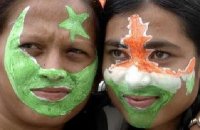
Advaita Vedanta – Vivekananda, Ramakrishna
www.ramakrishnavivekananda.info
www.vedantasociety-chicago.org
Dakshineswar Ramkrishna Sangha Adyapeath – In 1915, a young Brahmin named Annada Charan Bhattacharya was setting up a successful practice in Ayurvedic medicine in Calcutta. A capable scientist, he had discovered seven patent medicines and went on to become a renowned doctor all over Bengal.
Sri Ramakrishna Paramahamsa (Bangla: রামকৃষ্ণ পরমহংস Ramkṛiṣṇo Pôromôhongśo) (February 18, 1836 – August 16, 1886), born Gadadhar Chattopadhyay (Bangla: গদাধর চট্টোপাধ্যায় Gôdadhor Chôţţopaddhae), was a famous mystic of 19th-century India. His religious school of thought led to the formation of the Ramakrishna Mission by his chief disciple Swami Vivekananda – both were influential figures in the Bengali Renaissance as well as the Hindu renaissance during the 19th and 20th centuries.Many of his disciples and devotees believe he was an avatar or incarnation of God. Ramakrishna was born in a poor Brahmin Vaishnava family in rural Bengal. He became a priest of the Dakshineswar Kali Temple, dedicated to the goddess Kali, which had the influence of the main strands of Bengali bhakti tradition. Read More: > HERE <
Ramakrishna Math and Ramakrishna Mission are twin organizations which form the core of a worldwide spiritual movement (known as Ramakrishna Movement or Vedanta Movement), which aims at the harmony of religions, harmony of the East and the West, harmony of the ancient and the modern, spiritual fulfillment, all-round development of human faculties, social equality, and peace for all humanity, without any distinctions of creed, caste, race or nationality.
RAMAKRISHNA MATH is a monastic organization for men brought into existence by Sri Ramakrishna (1836-1886), the great 19th century saint of Bengal who is regarded as the Prophet of the Modern Age.
RAMAKRISHNA MISSION is a registered society in which monks of Ramakrishna Math and lay devotees cooperate in conducting various types of social service mainly in India. It was founded by Sri Ramakrishna chief apostle, > SWAMI VIVEKANANDA (vedanta, jnana yoga )< (1863-1902), one of the foremost thinkers and religious leaders of the present age, who is regarded as ‚one of the main moulders of the modern world‘, in the words of an eminent Western scholar A. L. Basham.
The ideology of Ramakrishna Math and Mission consists of the eternal principles of Vedanta as lived and experienced by Sri Ramakrishna and expounded by Swami Vivekananda. This ideology has three characteristics: it is modern in the sense that the ancient principles of Vedanta have been expressed in the modern idiom; it is universal, that is, it is meant for the whole humanity; it is practical in the sense that its principles can be applied in day-to-day life to solve the problems of life.
The motto of Ramakrishna Math and Ramakrishna Mission is: Atmano mokshartham jagad hitaya cha, „For one’s own salvation, and for the welfare of the world“. The main goals and objectives of these twin organizations, based on the principles of Practical Vedanta, are:
- To spread the idea of the potential divinity of every being and how to manifest it through every action and thought.
- To spread the idea of harmony of religions based on Sri Ramakrishna’s experience that all religions lead to the realization of the same Reality known by different names in different religions. The Mission honours and reveres the founders of all world religions such as Buddha, Christ and Mohammed.
- To treat all work as worship, and service to man as service to God.
- To make all possible attempts to alleviate human suffering by spreading education, rendering medical service, extending help to villagers through rural development centres, etc.
- To work for the all-round welfare of humanity, especially for the uplift of the poor and the downtrodden.
- To develop harmonious personalities by the combined practice of Jnana, Bhakti, Yoga and Karma.
Sarada Devi (Bengali: সারদা দেবী) (1853—1920), born Saradamani Mukhopadhyaya, was the wife and spiritual counterpart of Ramakrishna Paramahamsa, a nineteenth century mystic of Bengal. Sarada Devi is also reverentially addressed as the Holy Mother (Sri Maa) by the followers of the Ramakrishna monastic order. Sarada Devi played an important role in the growth of the Ramakrishna Movement. Read More: > HERE <
Endearingly known as ‘Holy Mother’, Sri Sarada Devi, the spiritual consort of Sri Ramakrishna, was born on 22 December 1853 in a poor Brahmin family in Jayrambati, a village adjoining Kamarpukur in West Bengal. Her father, Ramachandra Mukhopadhyay, was a pious and kind-hearted person, and her mother, Shyama Sundari Devi, was a loving and hard-working woman.
-
COMPLETE WORK OF RAMAKRISHNA AND VIVEKANANDA (free) downloads: www.ramakrishnavivekananda.info
-
Swami Vivekananda´s > SPEECH AT CHICAGO < at the PARLIAMENT OF WORLDRELIGIONS at Chicago in 1893.
- Read Fundamental Concepts of Vedanta here:
SRI VIDYA, Vidyas in Hinduism & Yoga Upanishads
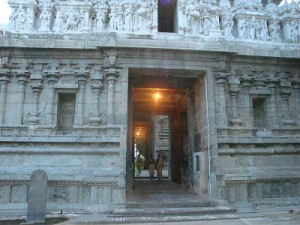
108 Upanishads | Vedanta Spiritual Library
Mess.166: A Holy Trip to Arunachaleshwara
http://taonews123.blogspot.com
ŚrÄ� VidyÄ� (also spelled „Shri Vidya“) is the name of a Hindu religious system devoted to the goddess LalitÄ� TripurasundarÄ� or simply TripurasundarÄ� (‚Beautiful Goddess of the Three Cities‘). According to British scholar Gavin Flood she is a tantric form of the goddess ŚrÄ� (also called LakṣmÄ�), consort of Vishnu. However, the late orthodox leader of the largest Samaya school of ŚrÄ� VidyÄ�, Sri Chandrasekharendra Saraswati Swamigal, says that the ŚrÄ� in ŚrÄ� VidyÄ� is a title of respect meaning The VidyÄ� and has no connotation to LakṣmÄ�. And Indian scholar V.R. Ramachandra Dikshitar states she is a form of Durga or Paravati, consort of Shiva , as well as several names from the LalitÄ� SahasranÄ�ma which call her the beloved of Shiva. The Sanskrit word vidyÄ� means „knowledge“ or „lore.“ A thousand names for this form of DevÄ� are recited in the LalitÄ� SahasranÄ�ma, which includes ŚrÄ� VidyÄ� concepts. Read More: > HERE <
The Sri Yantra (shown here in the three-dimensional projection known as Sri Meru Chakra or Maha Meru used mainly in rituals of the Srividya Shakta sects) is central to most Tantric forms of Shaktism.
Meru Chakras are frequently a central focus and ritual object for this worship of the Goddess. They are a more potent form of the Sri Yantra, since they are three-dimensional. Meru Chakras can be found in rock crystal and in metal, often a traditional panchaloha formula of silver, antimony, copper, zinc, and pewter, which enhances the flow and generation of Sri’s beneficial energies, covered in gold.
In the theology of the ŚrÄ� VidyÄ� the goddess is supreme, transcending the cosmos which is a manifestation of her. The school has an extensive literature of its own. The details of the beliefs vary in different texts, but the general principles are similar to those found in Kashmir Shaivism.
The goddess is worshipped in the form of a mystical diagram (Sanskrit: yantra) of nine intersecting triangles, called the śrÄ�cakra („Chakra of ŚrÄ�“) that is the central icon of the tradition.
SRI CHAKRA by S. SHANKARANARAYANAN – SRI CHAKRA, the king of chakras is a master plan of manifestation drawn by the divine Draughtsman on the board of the infinite, a transcript of the Transcendent, a symbol-image of the supernal verities. The spiritual and occult tradition of the worship of the Mother Goddess and the Sadhana of Srividhya are explained in sixteen chapters in terms of modern thought and understanding. Based on authentic and authoritative Tantric texts the exposition in English is inspiring and original, almost a classic in the field of esoteric literature.
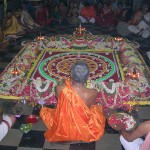
About the Author: Though his academic attainments are in Mathematics and his professional interests lie in a specialised field of industrial management, Sri S. Shankaranarayan has retained his first love for Sanskrit. In his childhood he was introduced to the ancient Sanskrit lore by his grandfather, Sri S. Narayana Iyer, who was himself a deep initiate in Sri Vidya, Later he came under the dynamic influence of Sri Kapali Sastriar. Shankaranarayanan cherishes a special regard for this tradition of the worship of the Divine Mother and his treatises on Devi Mahatmyam-both in Tamil and English have acquired an authenticity of their own. The present work on Sri Cakra, revealing as it does the depth of his scholarship, practical insight and occult knowledge, promises to be a classic on the subject. Endowed with luminous intellect, well-versed in the modes of esoteric worship and awake with an active spiritual aspiration, Shankaranarayanan is marked out to play a singular role in the resuscitation of the spiritual and occult tradition of India in terms of modern thought and understanding. -M. P. PANDIT
Buy the Book here: > www.exoticindiaart.com
- http://www.sriyantraresearch.com
- Ramana Maharshi – Sri Chakra Puja, every Friday <
- Meet International Vedanta Society, studies, friends at fb <
- Meet Kashmir Shaivism, friends and studies, at fb <
- Meet Shaktism „Doctrine of the Goddess“ at fb <
- Meet Hinduism, friends, fans, studies at fb <
- Meet Jivan Mukta, friends, studies at fb < (> Jivan Mukta <)
- Meet Prem Nirmal Holistic Counseling, studies, friends at fb <
- http://en.wikipedia.org/wiki/Flower_of_Life
KARMAPA IN EUROPE – YOGA OF MILAREPA
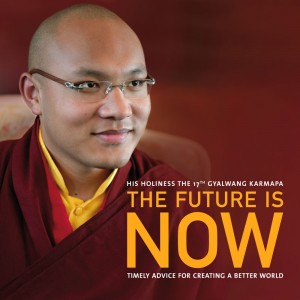
> www.chronicleproject.com – Talks on Milarepa <
> The Kagyu Tradtion – Milarepa <
The Karmapa (officially His Holiness the Gyalwa Karmapa) is the head of the Karma Kagyu, the largest sub-school of the Kagyupa (Tibetan Bka‘ brgyud), itself one of the four major schools of Tibetan Buddhism. The historical seat of the Karmapas is Tsurphu Monastery in the Tolung valley of Tibet. His Holiness‘ principal seat in exile is the Dharma Chakra Centre at Rumtek Monastery in Sikkim, India. His regional monastic seats are Karma Triyana Dharmachakra in New York, Dhagpo Kagyu Ling in France and Tashi Choling in Bhutan. Read More: > HERE <
Jetsun Milarepa (Tibetan: རྗེ་བཙུན་མི་ལ་རས་པ; Wylie: Rje-btsun Mi-la-ras-pa), (c. 1052—c. 1135 CE) is generally considered one of Tibet’s most famous yogis and poets, a student of Marpa Lotsawa, and a major figure in the history of the Kagyu (Bka‘-brgyud) school of Tibetan Buddhism. Read More: > HERE <
KAGYU & (Trad.) YOGA: Like all schools of Tibetan Buddhism the Kagyu consider their practices and teachings to be inclusive of the full range of Buddha’s teachings (or three yÄ�na) since they follow the fundamental teachings and vows of individual liberation & monastic discipline (Pratimoksha) which accord with the Mulasarvastivada tradition of the ŚrÄ�vakayÄ�na (sometimes called NikÄ�ya Buddhism or „HÄ�nayÄ�na“ ); the Bodhisattva teachings, vows of universal liberation and philosophy of the MahÄ�yÄ�na; and the profound means and samaya pledges of the Secret Mantra VajrayÄ�na. Read More: > HERE <
The central teaching of Kagyu is the doctrine of Mahamudra, „the Great Seal“, as elucidated by Gampopa in his various works. This doctrine focuses on four principal stages of meditative practice (the Four Yogas of Mahamudra).
Important practices in all Kagyu schools are the tantric practices of Chakrasamvara and Vajrayogini, and particularly the Six Yogas of Naropa.
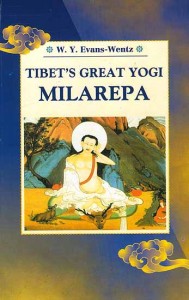
> BOOK : WWW.EXOTICINDIART.COM <
The Karmapas – Karmapa means „the one who carries out buddha-activity“ or „the embodiment of all the activities of the buddhas.“ In the Tibetan tradition, great enlightened teachers are said to be able to consciously arrange to be reborn as a teacher who can carry on the teachings of a predecessor in a prior life. Pursuant to this tradition, the Karmapas have incarnated in this form of manifestation body (Skt. nirmanakaya), for seventeen lifetimes, as of the present, and all have played the most important role in preserving and propagating the Buddhist teachings of Tibet.
Prior to the birth of the first Karmapa, the arrival of a Buddhist master who would be known as the Karmapa had been prophesied by the historic Buddha Shakyamuni and the great tantric master of India, Guru Padmasambhava. Throughout the centuries, Karmapas have been the central figure in the continuation of the vajrayana lineage in general and Kagyu lineage in particular, and have played a very important role in the preservation of the study and practice lineages of Buddhism. (For more on the Karmapas prior to the Seventeenth, see the section at this website on the Seventeen Karmapas.
VISIT OF HIS HOLINESS THE XVII.KARMAPA OGYEN TRINLEY DORJE TO EUROPE
Dear Dharma Friends, – I am sad to announce that the proposed visit of His Holiness the 17th Gyalwang Karmapa Ogyen Trinley Dorji was not approved by the Government of India. The visit was scheduled to take place from 27th May to 2nd July in nine countries of Europe. The Kagyu Office, the Administration of Gyalwang Karmapa was informed of the decision by the Tibetan Government in Exile on 3rd April 2010.
The process has begun to find out why this visit was not possible and what positive conditions are needed to make the visit possible in near future. I know a huge number of followers and friends in Europe were eagerly waiting for the visit of Gyalwang Karmapa and I know that all of you are sad and disappointed. I would like to take this opportunity to thank all the organizers, volunteers and donors for working so hard to prepare for the visit in last many months. Your cooperation and support were beyond any expectations. I hope and pray together with you that the visit will happen in very near future and that all of us would be able to receive his teachings in Europe.
Ringu Tulku,
Coordinator,
Karmapa’s Visit to Europe
- Researches in Indian and Buddhist Philosphy <
- Tibetan schools of Yoga:
- Anuyoga
- Mahayoga
- Six Yogas of Naropa
- Trul khor (Yantra Yoga)
- Ibn ‚Arabi Society Symposium, Ringu Tulku, Oxford College, 05/2010 <
- A Statement from the 17th Gyalwang Karmapa, Ogyen Trinley Dorje <
FREE Visa to India for MBA & Degree Programs, Jobs, friends at fb <
Vedanta, Quantum Physics & Erwin Schrödinger
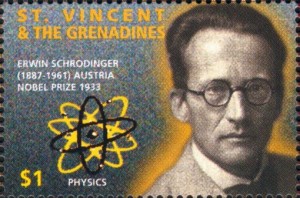
> Nobel Price: Erwin Schrödinger <
> Hinduism & Quantum Physics <
> E. Schrödinger: Are their Quantum Jumps ? <
The basic oneness of the universe is not only the central characteristic of the mystical experience, but is also one of the most important revelations of modern physics.“The most important discovery in the history of science“ -Prof.Henry Stapp, Quantum physicist.
Quantum mechanics (QM) is a set of scientific principles describing the known behavior of energy and matter that predominate at the atomic and subatomic scales. QM gets its name from the notion of a quantum, and that quantum value is the Planck constant. The wave–particle duality of energy and matter at the atomic scale provides a unified view of the behavior of particles such as photons and electrons. The notion of the photon as a quantum of light energy is commonly understood as a particle of light that has an energy value governed by the Planck constant. However, what is quantized is the angular momentum an electron can have as it is bound in an atomic orbital. When not bound to an atom, an electron’s energy is no longer quantized, but it displays, like any other massive particle, a Compton wavelength. While a photon does not have mass, it does have linear momentum. The full significance of the Planck constant is expressed in physics through the abstract mathematical notion of action. Read More: > HERE <
Erwin Rudolf Josef Alexander Schrödinger (German pronunciation: [ˈɛrviːn ˈʃrøːdɪŋɐ]; 12 August 1887, Erdberg – 4 January 1961, Vienna) was an Austrian theoretical physicist who achieved fame for his contributions to quantum mechanics, especially the Schrödinger equation, for which he received the Nobel Prize in 1933. In 1935, after extensive correspondence with personal friend Albert Einstein, he proposed the Schrödinger’s cat thought experiment. Read more: > HERE <
The Rishi’s vision – The > Rishi’s < vision of a world in which man participates in a seamless existence, indivisibly united with the universe around him, resonates through a discovery called > „BELL’S THEOREM“ < . This discovery, first proposed in 1964 by the physicist John S. Bell was first confirmed by experiment in 1972 by Professor John Clauser at Berkley. It is an almost unbelievable result – unbelievable because the logical mind has great difficulty in comprehending how it can be true. Its impact on the physics community has been enormous. Professor Henry Stapp, a physicist at Berkley and an authority on the implications of Bell’s Theorem, has called it. The most important discovery in the history of science.
Erwin Schrödinger is one of the greatest physicists of 20th century was also an enigmatic figure. He was a brilliant scientist, philosopher, poet and a humanist who lead a complex personal life. He was deeply philosophical in his thoughts than any other scientist of his time, but he apparently did not make far-reaching philosophical conclusions from his work in quantum physics. He was held back because he knew there was a lack of clarity. His search for the truth never reached conclusion as his one time lover Hansi Bauer noted.
Erwin’s interest in Vedanta (one of the six schools of Hindu philosophy) and Upanishads started at a young age when he was accustomed to cold and hungry times in war-torn Vienna, but his belief in Vedanta remained the same until his death in 1961: He was a life long believer. Schrödinger was deeply influenced by the thoughts of Schopenhauer, and thus developed strong interest in Buddhist philosophy and Vedanta. He studied the works of Schopenhauer, Henry Warren, Max Welleser, Richard Garbe, Paul Deussen, Max Muller, and Rhys Davids to understand Hindu and Buddhist philosophies.
According to „Vedanta“; there exists only one universal being called the Brahman, which comprises all of reality in an undivided unity. This being absolutely homogeneous in nature: It is pure thought, which is not an attribute but the substance devoid of any qualities. The Brahman is associated with a power or a principle of illusion called Maya. As a magician creates illusion during his act, Brahman through Maya creates the appearances of the material world. Maya is the cause of the material world, and an indivisible Brahman is present in all forms of existence. The soul in reality is an infinite Brahman enmeshed in the unreal world of Maya. The unenlightened soul is incapable of looking beyond this illusion, but an enlightened soul knows the difference between its true self and the external illusory world thus paving the way for identifying itself with Brahman. This unity and continuity concept of All in One expounded in Vedanta is consistent with quantum physics where the universe is superimposed with inseparable waves of probability amplitudes. The Heisenberg uncertainty phenomenon and quantum Zeno effect is an allegory to the illusions of Maya or a prelude to the indivisible, All in One, Supreme Brahman.
In his lectures on relationship of spirit and science, Schrödinger believed that spirit is subjective and can not be subjected to objective examination. He quoted Sañkarâcârya’s commentary, Subject and Object; I and not-I are opposed to each other like light and darkness.
Where Science and Buddhism Meet PART 1, Amit Goswami, Quantum Physics & Consciousness, QUANTUM MECHANICS and THE BIBLE, The Consciousness of the Universe > What the Bleep !? Quantum Physic meets Kabbalah <
Hindu philosophers believed that ego consists of thought in its relation to God, Schrödinger wished to identify ego consisted of thought and the spirit. In a letter to Einstein, he once wrote that he doesn’t believe much in God the father, and Jesus Christ His son, and he lashed out Christian churches accusing them of gross superstition in their belief of individual souls. He continued to believe in the concept one universal being, the Brahman, which comprises all of reality in an undivided unity. Quantum physics has tremendous philosophical implications, which revolutionized modern thought in science and philosophy because it did not agree with the philosophy of materialism expounded by Newton.
Interpretation of quantum world suggested that strict determinism and predictability is not an accurate description of reality, and consciousness is an integral part of the laws of quantum physics. Quantum physical experiments conducted by Alain Aspect (to address Einstein’s EPR experimental results) showed that measurements on correlated pairs follow the quantum mechanical predictions. This result has been found even when the particles are separated by a distance such that even an influence propagated at the speed of light does not affect the result. Thus clearly denying the local realism concept of proposed by Einstein. This simply justifies the principle concept of Vedanta; that is, the reality behind the appearances of physics as an unbreakable whole. If the physical world is real, it is holistic and not merely the sum of separate parts. The wholeness created by the wave particle duality and the indivisible nature of quantum world is in agreement with Vedanta philosophy of unity or Oneness of the Brahman.
Read Full Article at Rama Rao’s Amazon Blog: > HERE < Born and raised in India, and studied and worked in US. My career began as a biochemist and I have published over 60 original research papers in peer reviewed journals in chemistry and biological sciences. I have also published over seven chapters in edited books concerning electron spin resonance spectroscopy and free radical biochemistry. Over several years I developed strong interest in cosmology and astrophysics. I am firmly convinced that nature’s work in terms of its creation of the universe and life may be understood better from quantum cosmology, particle physics, philosophy of physics and universality of consciousness.
- ARTICLES: VEDANTA <
- Ganden Monastery one of the ‚great three‘ university monasteries of Tibet <
- Vishwa Bharati University in India <
- SCHRÖDINGERS BOOKS: Life and Thought
- What Is Life?: with „Mind and Matter“ and „Autobiographical Sketches“
- Mind and Matter.
- In Search of Schrödinger’s Cat: Quantum Physics and Reality
- My View of the World
- Space-Time Structure (Cambridge Science Classics)
- ‚Nature and the Greeks‘ and ‚Science and Humanism‘ (Canto original series)
- The Interpretation of Quantum Mechanics: Dublin Seminars(1949-1955) and Other Unpublished Essays
- Buy Here: http://www.amazon.com/gp/blog/post/PLNK33XJI5G66IAW7
The Real Meaning of „ADVAITA“, Vedanta
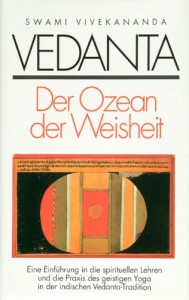
> INTERNATIONAL CONGRESS OF VEDANTA <
> Sri Ramana Maharshi Ashram, Message No.141 <
> Advaita Vedanta, Vivekananda, Ramakrishna <
Vedanta (Devanagari: वेदान्त, VedÄ�nta) was originally a word used in Hindu philosophy as a synonym for that part of the Veda texts known also as the Upanishads. The name is a sandhied form of Veda-anta = „Veda-end“ = „the appendix to the Vedas“. By the 8th century CE, the word also came to be used to describe a group of philosophical traditions concerned with the self-realisation by which one understands the ultimate nature of reality (Brahman). The word Vedanta teaches that the believer’s goal is to transcend the limitations of self-identity. Vedanta is not restricted or confined to one book and there is no sole source for Vedantic philosophy. Vedanta is based on two simple propositions: 1.) Human nature is divine. 2.) The aim of human life is to realize that human nature is divine. READ FULL ARTICLE > HERE <
Advaita Vedanta (IAST Advaita VedÄ�nta; Sanskrit अद्वैत वेदान्त; is a sub-school of the VedÄ�nta (literally, end or the goal of the Vedas, Sanskrit) school of Hindu philosophy. Other major sub-schools of VedÄ�nta are Dvaita and ViśishṭÄ�dvaita. Advaita (literally, non-duality) is a monistic system of thought. „Advaita“ refers to the identity of the Self (Atman) and the Whole (Brahman).
The key source texts for all schools of VedÄ�nta are the Prasthanatrayi—the canonical texts consisting of the Upanishads, the Bhagavad Gita and the Brahma Sutras. The first person to explicitly consolidate the principles of Advaita Vedanta was Adi Shankara while the first historical proponent was Gaudapada, the guru of Shankara’s guru Govinda Bhagavatpada. READ FULL ARTICLE >HERE <
The Advaita Vedanta Anusandhana Kendra (Advaita Vedanta Research Center) is dedicated to increasing knowledge of the tenets of Advaita Vedanta–a philosophy and religion based on the Vedas that teaches the non-duality of the individual soul and God–as expressed by its foremost exponent Shankaracharya (whose picture you see above) and the unbroken succession of teachers descended from him.
Die Philosophenschulen – Im Anschluss an die vedische Zeit entstanden in Indien verschiedene Philosophenschulen. Einige davon akzeptierten die Veden als Autorität, diese Schulen werden als orthodox bezeichnet. Andere Schulen lehnten die Veden ab. Dies sind der Buddhismus, die Jaina-Religion und die Charvakas (Materialisten). Von den orthodoxen Schulen sind in spiritueller Hinsicht interessant:
-
Samkhya – diese Schule versucht die Welt möglichst logisch zu erklären.
-
Yoga – baut auf den Theorien des Samkhya auf und liefert eine praktische Methode.
-
Tantra – baut auf den Theorien des Vedanta, bzw. Advaita auf und liefert eine praktische Methode.
-
Vedanta – Vedanta, wörtlich Veda-Ende, bezieht sich also auf die Upanishaden. Deren Botschaft fasste Badarâyana in seinen Vedanta-Sutras äußerst knapp zusammen.
International Vedanta Society – Vedanta is a spiritual science that shines light upon our very nature, illuminating the truth that we are all One with God, and that our souls are the divine manifestation of existence, knowledge, and bliss.
This truth is veiled beneath false beliefs that would limit us through fears, doubts and weaknesses. Vedanta uproots this ignorance thereby inviting us to embrace the truth of who we are (omnipresent, omniscient and omnipotent). This universal truth is available to any seeker regardless of religion, culture, or sex.
The core and founder of IVS is Bhagavan. His deep love and concern for others inspired him to pioneer many social welfare activities, even as a child. His passionate quest for truth led him to the holy feet of his master Swami Pavitrandaji Maharaj, and through his teachings, Bhagavan sank into the depths of Nirvikalpa Samadhi, (realization of the Supreme Self) in 1984, and Mahabhava (Supreme Godhood) in 1987. Since that time, Bhagavan has strived to help others attain and taste supreme joy and love.
The life and words of Bhagavan, through truth and love incarnate, offer a shelter for the tired and weary, who return home with peace, bliss, confidence, hope, and life.
The International Vedanta Society (IVS), was formed on November 19th, 1989 through the divine will manifesting in Bhagavan. Commencing its journey from Guwahati in the North Eastern part of India, the society has within a short span spread to various countries throughout the world, through its mediums of love and service. Realization of the Self or God is the key note of IVS. Its members and well-wishers strive continuously to radiate eternal love and bliss.
International Congress of Vedanta was established in 1986 by Professor S.S. Rama Rao Pappu in the Department of Philosophy, Miami University in order to bring together scholars specializing in Indian Philosophies and Religions from all over the world for the study and exchange of ideas and to promote research. In the past eighteen years, fifteen conferences were organized, ten of them at Miami University and five conferences were organized abroad – in Port-of-Spain, Trinidad, and in Rishikesh (Himalayas), Madras, Hyderabad and Visakhapatnam, India.
Centennial celebrations of great Indian philosophers were also held during the Vedanta Conferences – e.g. birth centennial of S. Radhakrishnan in 1988, 1200th anniversary of Sri Sankaracharya in 1990, centennial of Swami Vivekananda’s sojourn to America and his participation in the Parliament of World’s Religions in Chicago in 1992, birth centennial of J. Krishnamurti in 1995, and the 700th anniversary of sanjeewan Samadhi of Sri Jnaneswara in 1996.
Vedanta Congress welcomes for presentation in the conferences research papers in all areas of Indian philosophies and religions.
Though the first Vedanta Conference began with a narrowly focused group for the study of Vedantic texts and their interpretation, the scope of the Vedanta Congress was expanded during the years to include:
- (a) all major schools of Vedanta (Advaita, Visistadvaita, Dvaita, Suddhadvaita, etc.), Hindu, Buddhist and Jaina Darsanas, Epics, Puranas and Dharma Sastras
- (b) applied Indian philosophy, dealing with contemporary issues like abortion and euthanasia, war and peace, caste and race, karma and cloning
- (c) Indian philosophical implications of recent developments in mathematics, life sciences, cognitive science, etc.
-
Vedanta Articles Dein Ayurveda Net > HERE <
-
COMPLETE WORK OF RAMAKRISHNA AND VIVEKANANDA (free) downloads: www.ramakrishnavivekananda.info
-
Swami Vivekananda´s > SPEECH AT CHICAGO < at the PARLIAMENT OF WORLDRELIGIONS at Chicago in 1893.
- Read Fundamental Concepts of Vedanta here:
Indo Tibetan Yogic Tradions of the 5 Rites
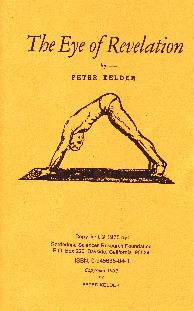
> The Indo-Tibetan Tibetan Yogic Tradition <
and the “Tibetan Rites of Rejuvenation”
The Five Tibetan Rites is a system of exercises reported to be more than 2,500 years old which were first publicized by Peter Kelder in a 1939 publication entitled „The Eye of Revelation“. Although practically nothing is known about Kelder, one source reports that Kelder was raised as an adopted child in the midwestern United States, and left home while still in his teens in search of adventure. In the 1930s, Kelder claims to have met, in southern California, a retired British army colonel who shared with him stories of travel and the subsequent discovery of the Rites. Originally written as a 32-page booklet, the publication is the result of Kelder’s conversations with the colonel.The Rites are said to be a form of Tibetan yoga similar to the more well-known yoga series that originated in India. However, the Five Rites and traditional Tibetan yoga both emphasize „a continuous sequence of movement“ ( Sanskrit: vinyasa ), whereas Indian forms focus on „static positions“. Although the Rites have circulated amongst yogis for decades, skeptics say that Tibetans have never recognized them as being authentic Tibetan practices.
The Five Tibetan Rites are also referred to as “ The Five Rites „, “ The Five Tibetans „, “ The Five Rites of Rejuvenation “ and most recently “ T 5 T „. Read More: > HERE <
Disputed origins – Although the origin of the Five Rites prior to the publication of The Eye of Revelation is disputed between practitioners and skeptics, a comparison of illustrations of the postures shows a remarkable similarity between the Rites and authentic Tibetan ‚phrul ‚khor exercises from a system rendered into English as ‚Vajra Body Magical Wheel Sun and Moon Union‘ (Tibetan: རྡོ་རྗེ་ལུས་ཀྱི་འཕྲུལ་འཁོར་ཉི་ཟླ་ཁ་སྦྱོར; Wylie: rdo rje lus kyi ‚phrul ‚khor nyi zla kha sbyor).
Chris Kilham, whose 1994 book The Five Tibetans helped respark the Five Rites‘ popularity, says, „As the story has it, they were shared by Tibetan lamas; beyond that I know nothing of their history.“Even though the historic lineage of the Rites prior to the publication of Kelder’s booklet remains to be ascertained, the Rites have nevertheless been affirmed by a lama and scholar of the Sa skya tradition of Tibetan Buddhism as being „a genuine form of yoga and were originally taken from an authentic Indo-Tibetan tantric lineage, namely a cycle of yantra-yoga associated with the Sadnadapadadharma.“ These techniques have been integrated into the well-known > “Six Yogas of Naropa”< (Sk. Sadnadapadadharma षड्नादपादधर्म Tib. na ro chos drug ན་རོ་ཆོས་དྲུག་).
However, it has been argued that the Five Rites predate yoga as we know it today by as much as seven hundred years or more and, therefore, could not have derived from either Tibetan or Indian forms of yoga. Moreover, it has also been suggested that the Rites are more likely to have originated from a system of Kum Nye which, like the Rites, date back 2,500 years.
Nevertheless, Chris Kilham also states that “ the issue at hand, though, is not the lineage of the Five Tibetans. The point is their immense potential value for those who will clear 10 minutes a day to practice.“
Tibetan Buddhism Trul Khor, by Tenzin Wangyal Rinpoche
Records of Teachings Received by Tibetan Masters from the Sa skya Tradition – A Project of the University of Munich in collaboration with the Tibetan Buddhist Resource Center (New York), funded by the German Research Foundation (DFG):
About the Database: The „Records of Teachings Received“ (gsan yig) from which the entries of this database originate, form part of the collected writings of the renowned Sa skya pa master and historian A mes zhabs Ngag dbang kun dga‘ bsod nams (1597-1659).
This database contains references to almost 1,800 individuals (references to some of whom were previously scarce or non-existent) listed in 746 lineage records. Read More: > HERE <
Kum Nye and sKu-mNyé refer to a wide variety of Tibetan religious and medical body practices. The two terms are different spellings in the Latin alphabet of the same Tibetan phrase (Wylie: sku mnye), which literally means „massage of the subtle body“. Some systems of sku mnye are vaguely similar to Yoga, Tai Chi, Qi Gong, or therapeutic massage. Confusingly, „Kum Nye“ and Ku Nye are also used to transcribe the Tibetan phrases dku mnye („belly massage“) and bsku mnye („oil massage“), which are pronounced identically to sku mnye. dKu mnye and bsku mnye manipulate the physical body, rather than the subtle (energetic) one.
Systems of Kum Nye are found in many Tibetan Buddhist and Bön traditions. These can be entirely different both in purpose and in methods. For instance, some forms are very slow moving; others are intensely aerobic. Some systems are based in the Tibetan Medical Tantras (scriptures), and are mainly therapeutic. Other systems are based in Dzogchen, and are mainly religious in purpose. Read More: > HERE <
N�rop� or Naropa (Prakrit; Sanskrit: N�ropad�, 956-1041) was an Indian Buddhist yogi, mystic and monk. He was the disciple of Tilopa and brother, or some sources say partner and pupil, of Niguma . Naropa was the main teacher of Marpa, the founder of the Kagyu school of Tibetan Buddhism. As an Indian tantric Buddhist, he has a place in Vajrayana Buddhism as a whole, but he is particularly renowned in Tibetan Buddhism via his name being attached to the six yogas of Naropa, a suite of advanced yogic practices for the attainment of skills relevant to the completion stage of anuttarayogatantra.
Naropa was born a high status Brahmin but from an early age showed an independent streak, hoping to follow a career of study and meditation. Succumbing to his parents wishes, he agreed to an arranged marriage with a young brahmin girl. After 8 years they both agreed to dissolve their marriage and become ordained.
At the age of 28 Naropa entered the famous > Buddhist University at Nalanda < where he studied both, Sutra and Tantra.
He gained the reputation as a great scholar and faultless debater, essential at that time as the tradition of debate was such that the loser automatically became a student of the winner. He eventually gained the title „Gatekeeper of the North“; engaged in many debates, taught and won many students. Read more: > HERE <
-
Articles:
-
Booktipp: > Eye of Revelation: (Paperback) <
-
Umbrella Association: > Die Fünf Tibeter Dachverband ® e.V. <
Guru Shishya Tradition in Yoga, Veda, Arts
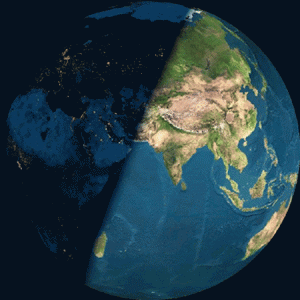
http://eastmeetswestmusic.com/
The guru-shishya tradition, lineage, or parampara, denotes a succession of teachers and disciples in traditional Indian culture and Dharmic Traditions such as Sanatana Dharma, Sikha Dharma, Jaina Dharma and Buddha Dharma. It is the tradition of spiritual relationship and mentoring in traditional Hinduism where teachings are transmitted from a guru (teacher, गुरू) to a ‚śiṣya‘ (disciple, शिष्य) or chela. Such knowledge, whether it be vedic, agamic artistic, architectural, musical or spiritual, is imparted through the developing relationship between the guru and the disciple. It is considered that this relationship, based on the genuineness of the guru, and the respect, commitment, devotion and obedience of the student, is the best way for subtle or advanced knowledge to be conveyed. The student eventually masters the knowledge that the guru embodies. The word Sikh is derived from the Sanskrit word shishya. It is related to the Brahmacharya. Read More: > Here <
Rashtriya Ayurveda Vidyapeeth was established on 11th Feb., 1988 with one of the objectives of promoting knowledge of Ayurveda and started functioning since 1991. The Vidyapeeth initiated the course of Member of RAV with an effort to revive the traditional method of Gurukula system of informal education of India i.e., Guru Shishya Parampara to Ayurvedic graduates after formal education. As people are aware, the present classical texts of Ayurveda, Charaka Samhita, Sushruta Samhita, Ashtanga Hridaya etc. are believed to be the outcome of such informal education. This kind of study is lacking at present in the modern educational institutions where the courses are bound by fixed syllabus, duration of time and many subjects to learn.
Guru Shishya Parampara is the traditional method of residential form of education wherein the Shishya remains with his Guru as a family member and gets the education as a true learner. This system gradually vanished with the disappearance of Gurukuls. However, it is still a very effective means of transfer of knowledge from the Gurus (teachers) to Shishyas (students). RAV is making efforts to revive the system through two types of courses.
In colleges and institutions only a relevant portion of the Samhita (texts of Ayurveda) is being taught in the form of syllabus. Guru Shishya Parampara of RAV facilitates the students to study whole text and get adequate knowledge of Samhita and its Teeka (commentary) and traditional skill for the Ayurvedic clinical practice. The Shishyas get sufficient time for interaction and discussion on the issues taken for study.
COURSES:
- (A)acharya guru shishya parampara, (One-year course of Member of Rashtriya Ayurveda Vidyapeeth) (MRAV)
- (B)Chikitsak guru shishya parampara, (One-year/Six month’s course of Certificate of Rashtriya Ayurveda Vidyapeeth) (CRAV)
- Read More: > HERE <
„The main features of a fruitful Guru-Shishya relationship led to (1) purity of mind and body, humility, a sense of service, and a devotional and spiritual attitude; (2) a thorough grounding of technique and science of music; (3) the gradual development of the disciple as he sits behind his guru at concerts and joins in when asked, but does not perform by himself until his guru finds him fit to do so; and (4) freedom from economic worries by the disciple, living and serving his guru, as a member of his family.“
Pandit Ravi Shankar (My Music, My Life)
PUBLICATIONS: Vidyapeeth has been publishing certain books of Ayurveda, which are found suitable for general public in creating awareness, and also books for Ayurvedic professionals. The Vidyapeeth also publishes the theses of its students after necessary review and recommendation by the Expert Committee and approval by the Governing Body. Further, the Vidyapeeth brings out a Souvenir, containing selected full papers, at the time of Conference/Seminar conducted every year.
SEMINARS/CONFERENCES: Vidyapeeth conducts a Conference/Seminar/Workshop every year on a topic that requires discussion and exchange of the views and clinical experience on the diagnosis and treatment of the disease, mostly the health problems not easily managed by majority of Vaidyas without side effects. So far Conferences/Seminars have been conducted on Kshara Sutra, Heart diseases, Ayurvedic Education, Training and Development, Nadi Vigyan, Fast Acting Ayurvedic Medicines and Techniques, Cancer, Shothahara Avam Jeevanu Nashak Ayurvedic medicines, AIDS, Thyroid disorders, Rasayana, Ayurvedic management of kidney and urinary disorders , Management of Hepato-biliary & Splenic disorders through Ayurveda, Diabetes Mellitus, Mental Health and Vatavyadhis.
AWARD OF FELLOW OF R.A.V.: For achieving one of its objectives, the Vidyapeeth awards Fellowship to the eminent scholars of Ayurveda and practitioners of various traditional Ayurvedic techniques in recognition of their scholarly expertise and contribution in the field of education, research, patient care and literature. In the year 1992 the Vidyapeeth awarded 50 Foundation Fellowships to eminent Vaidyas. Thereafter, a maximum of 30 fellowships are being awarded every year. This is an honorary recognition and a felicitation with a citation, a shawl and a kalash/memento presented to each awardee in the Convocation of RAV. As per rules of the Vidyapeeth, the total number of fellows at any time shall not exceed 300. Every year the Governing Body determines these fellowships on the basis of the bio-data of scholars. So far, 224 scholars have been awarded Fellow of Rashtriya Ayurveda Vidyapeeth (FRAV) Annexure – IV.
CONVOCATION: In order to fulfill the objectives of the Vidyapeeth viz. to institute due recognition to successful candidates and to recognize and encourage merit in various branches of Ayurveda, the Vidyapeeth holds Convocation every year for awarding certificates to passed out students and to felicitate eminent scholars and Vaidyas with Fellow of Rashtriya Ayurveda Vidyapeeth (FRAV) for their significant contribution for the progress of Ayurveda in the fields of education, research, literature and health care.
A guru (Sanskrit: गुरु) is one who is regarded as having great knowledge, wisdom and authority in a certain area, and who uses it to guide others (teacher).
In sanskrit gu means darkness & ru means light. As a principle for the development of consciousness it leads the creation from unreality to reality, from the darkness of ignorance to the light of knowledge. In its purest form this principle manifests on earth as a divine incarnation (saint), a person with supreme knowledge about God and all creation. Other forms of manifestation of this principle also include parents, school teachers , non-human objects (books) and even one’s own intellectual discipline.
The syllable gu means shadows
The syllable ru, he who disperses them,
Because of the power to disperse darkness
the guru is thus named.
– Advayataraka Upanishad 14—18, verse 5
In the religious sense the term is commonly used in Hinduism and Sikhism, as well as in Buddhism and new religious movements.
Finding a true guru is often held to be a prerequisite for attaining self-realization. Guru Nanak, founder of the Sikh religion said: „Even if a thousand suns and moons rose, they would be unable to remove the darkness of ignorance within the heart. This can only be removed through the grace of the Guru.“
„Guru“ also refers in Sanskrit to Brihaspati, a divine figure in Hinduism. In Vedic astrology, guru or Brihaspati is believed to exert teaching influences.[clarification needed] Indeed, in many Indian languages such as Hindi, the occidental Thursday is called either Brihaspativaar or Guruvaar (vaar meaning day of the week).
In contemporary India, Indonesia and the Philippines, the word „guru“ is widely used with the general meaning of „teacher“. Guru in Buddhism, Hinduism, Sikh…Gurukulam System in Tradititional KALARI… Read More: > HERE <
In Western usage, the meaning of guru has been extended to cover anyone who acquires followers, though not necessarily in an established school of philosophy or religion. In a further Western extension, guru is used to refer to a person who has authority because of his or her perceived secular knowledge or skills, such as in business.
Weblinks: > yoga-vidya.de < ( no english translation avaiable) – ….Ishwara selbst ist der ursprüngliche Guru (Lehrer). Unsere Guru Parampara (Schüler-Lehrer-Tradition) beginnt bei Narayana. Narayana ist Vishnu, also eine Manifestation von Ishwara. Die Hatha Yoga Guru Parampara fängt bei Shiva an. Alle Guru Paramparas in Indien fangen letztendlich mit Gott an, indem ursprünglich ein Lehrer die Weisheit direkt von Gott empfangen hat. So ist Gott der Lehrer aller Lehrer..
- www.punarjanis.com (Dr. E. Shaji Raj)
- www.unom.ac.in
- www.hihtindia.org (Himalayan Ayurveda Hospital Trust)
- AYURVEDA, Prime Treatments in Ayurveda <
- AYURVEDA4UAll <
- Meet Yoga Vidya English, friends and Studies at fb <
- Meet Ayurveda Friends, Groups, Studies at facebook <
- Meet Ayurveda4UAll, friends, Studies at facebook <
- Meet CODEX ALIMENTARIUS friends and group at fb <
- Meet FREE Visa to India for MBA, Degree Programs , it jobs at fb <
- Meet Lord Dhanwantri, friends, studies at facebook <
YOGA, TREE AND OUR UNIVERSE
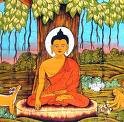
The Originar of Hatha-Yoga
Tree is the highest evolved form in plant kingdom. Man is the highest evolved species in Animal kingdom. Mushrooms are the best fungi visible on this planet. There is commonality of forms among all these highest evolved forms among different type of life-forms -Tree-like structure.Man is a cerebro-spinal being sheathed within a fleshy body. Most evolved form of cell is neuron that mediates consciousness is Tree-like structure. Surprisingly, most powerful thing that mankind achieved viz. atom bomb , produce Tree-like clouds after exploding on the surface.
Tree-like structure in Nature!
One can find out where else do Tree-like structure in nature exist. Pliny, the Younger linked the eruption of Vesuvius eruption in 79 A.D. with Italian umbrella pine. It is now an established scientific fact that the most powerfur process within earth, volcanic plumes that move inside earth is umbrella-shaped with a column & umbrella spinning about vertical axis( Tree-like). The most terrible force on the surface of the earth are the Tornados which are again Tree-like shapes with a column & an umbrella. Tree-like shape is found in other very powerful phenomena like lightening flashes, electric sparks, river delta, snowflakes, coral .
Tree-like structure is characteristics of every visceral system. Biologists trace this form in the mosses, lichens, shrubs, root system, mammalian lung bronchioles, cells of nervous system, veins & arteries forming cardio-vascular system. Wheresoever there are branching system, that invariably culminate in a Tree-like structure.
Tree & Fractal Geometry
In last fortnight, a brilliant paper was published in ‚Advances in Soft Computing“, under the title“Algorithms for Tree-like Structure Generation“ by Anna Romanowska, a neuro-anatomist et al. The team characterised Tree-like structure as that form which bifurcates but do not form any cycles. The team picked up the concepts of fractal geometry & fused with algorithms to create a Recurrent Algorithm. Self-similarity and repetition of sequence( iteration) is generated by a bifurcating cascade. The team concluded that if living system are generated recurrently, complex organic structures like roots, bronchial system in lungs emerge.
Now that an algorithm for Tree-like structure has been generated, it will be feasible in a decade to manufacture on mass scale silicon bronchial/ cardio-vascular/ neural system .
Before the advent of Fractal geometry by Benoit Mandelbrot during 1970s, the question of Tree-like structure had perturbed many a great minds. Hisao Honda of University of Kyoto published a paper on “ Description of the Form of Trees by the parameters of the Tree-like body“ in the Journal of Theoretical Biology, May, 1971. Honda concluded that Tree architecture maximizes flow access. He found stastitical similarity in living & non-living world, among branching in living system & geological & geophysical system.
- Meet Swami SIVANANDA friends, yoga, studies, at facebook <
- Meet Bhagavad Gita friends, yoga, studies at facebook <
- Meet Patanajali friends, yoga, studies at facebook <
- Meet Buddhism, friends, studies, Medicine at facebook <
- Meet Paramahansa Yogananda friends, groups, studies at fb <
- Meet Raja Yoga, Friends, Group, studies at facebook <
- Meet IYENGAR (B.K.S.), Yoga, Friends, Studies, Groups at fb<
- Meet Swami Vivekananda, Yoga, Studies, Friends, Groups at fb<
- Meet Bhagavad Gita, Yoga, Studies, Friends, Groups at fb <
- Meet Ramana Maharshi Groups, Friends, Studies, Fans at fb<
- Meet Hinduism, Groups, Friends at facebook <
- Meet Kashmir Hinduism, Studies, Friends at facebook <
- Meet Shaktism and Devi the Godess at facebook <
- Meet Saundaryalahari: Wave of Bliss by Shankaracharya at fb <
- Meet Arsha Vidya Gurukulam, Studies, Friends, Fans, at fb <
- Meet Advaita Vedanta,Groups,Studies, Vivekananda at fb <
- Meet Yogi Yogendra Nath, Studies about Goraksha at fb <
- Meet Jaya Kula and the three ways of Practicing tantra at fb <
- Meet VASTU, Friends, and Study Groups at facebook <
- Meet Jyotish, Friends, and Study Groups at facebook <
- Meet Sacred Geometry at facebook <
- READ MORE HERE:
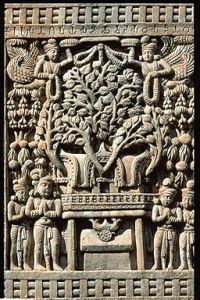
Morphic field & Morphic Resonance!
Tree-form is found in lower kingdom of Animal as well as Fungi. Jelly fishes or the polyp, these are invariably shaped like Trees. The colonies of proliferating marine organism replicate this form. It is interesting that jellyfishes which have no neurons & man with maximum neurons are essentially same in shape. Great Scottish biologist, Sir D’Arcy Thompson wrote in 1917 „On Growth and Form“, to analyse patterns & shapes in nature. His erudite tradition sd being carried by Rupert Sheldrake, a British biologist. He has done extensive work on the concept of morphic field & morphic resonance. By morphic resonance, he explains the influence of Like upon Like by which a connection among similar fields is established. He has shown in his work example of crystallization. It is very difficult to crystallize a new compound for the first time. Once it is done, a morphic field emerge. It is easier next time if someone does elsewhere in the world. There is a cumulative influence & it gets easier & easier to crystallize the compound. There is an accelerated rate of crystallization . Similarly, in learning among rats, this phenomena has been experimentally confirmed. It is difficult for a rat to pass through a maze for the first time. But, once a rat does this, another rat elsewhere does it much easily. And with each learning , there is spontaneous spread of new habits. For Sheldrake, evolutionary spread of new habit is not genetic but depends on a kind of collective memory due to morphic resonance.
This can be easily comprehended in case of human. It was very tough to manufacture clock or VCD or computer. More people are manufacturing, easier it is getting to manufacture. Watches, transistora & VCDs are now cottage industry. Who knows in future, robotics will emerge as similar kind of easily handled industry and there will be garages in every nook & corner of city to repair robots or even remodell robots by neighbourhood mechanic.
Sheldrake further proposes the concept of the „Memory of Nature“. Habits of nature depend on non-local similarity reinforcement. Through morphic resonance, the pattern of activity in self-organizing system are influenced by similar patterns in the past. He brings back the idea of Carl Jung‘ collective unconscious.
Examining Growth of Tree-Form!
I find the concept of morphic resonance appealing. That can explain this frequent recurrnce of similar pattern in nature. If we ponder over the shape of DNA & its future. The fluid around earth’s inner core creates a helical movement and generates magnetic field. The geodynamo of the earth is a self-replicating system that help explain the continuity of magnetism in earth’s core , otherwise it would have dissipated within 20,000 years. Now, the transformatory biological molecule,DNA, is helical as well as self-replicating. Within geo-physical processes, we know that Tree-like plumes are created. Now, this geophysical structure resonates throughout future evolution of biological world. For every plume within, there is a tornado on the surface. This first form of powerful process recurs at the level of the most developed categories at various levels, may it be fungi, or plants or animals or cells. And, that form recurs in even man-made powerful processes like atomic explosions.Upon visualizing this sequence, I can very well predict that the most successful biological robots or most efficient spaceship for planetary travels would have Tree-like architecture. Our Discovery spaceship is a poor materialization of that critical architecture.
Tree & bifurcation!
This Tree-like structure itself is generated by recurrent self-similarity which results due to behaviour of a dynamic system. Now, the chaos theorists have worked out very well that how in a dynamic system , a stage of crisis is set in and at the point , there are two possibilities for the system to transform. Sometimes, the system oscillates between two possibilities as found in certain chemical clocks extensively investigated by Nobal laureate Ilya Prigogine.Most of the times, the branches grow further and then bifurcate. This is iteration of self-similarity that later results into Tree-like structures.
If this kind of bifurcaing iteration is fundamental to our changing Reality which is dynamic, and there is morphic resonance, one can draw the contours of this phenomena of emergence of Tree-like structure at a higher level.
End of biological evolution!
The bifurcation, that determines DNA-replication to cell-division, has finally achieved its destiny in the biological world in the form of Human beings. We are the highest biological form and the biological evolution has now concluded. There is no further scope of biological evolution beyond us.Perfect biological bifurcating branching system has been achieved. Our lungs, our cardio-vascular system, neural system .. everything has emerged as mere consequence of cascading bifurcation. Surprisingly, we have greater number of most evolved cells viz. neurons (200 billions) which themselves replicate own form at macrolevel. The cerebro-spinal system is a magnified neuron. We are the only animal to walk on 2 legs. Penguins do perform but lack other binarities. We have two legs, two hands, two nostrils, two ears, two testicles, two mammary glands, two eyes, two kidneys, two hemispheres in brain, two atrium, two ventricles in heart, two excretory points, two lips, two jaws. Our thinking pattern is also binary. Our categories are in twos- good/bad, high/low,sacred/profasne, self/other… We donot yet understand that this duality in thought is rooted in hemispheric brain or in fractal geometry. There is no more bifurcation & branching possible in bodily architecture of human beings. This is the end-point of biological evolution. Now, mankind is on verge of developing biological robots & higher order machine consciousness therby imbuing consciousness to physical world bypassing the biological evolution. We are becoming the co-creator of the Universe as well as agent to accelerate self-consciousness of physical matter in the universe.
Trees are our cousin!
Now, the issue of Tree-like structure resonates into our collective psyche. Tree is the source of wisdom, healing, nourishment, power. Bible myth has Tree . Newton discovered moodern science sitting under an apple Tree. Buddha discovered non-theistic self-awareness sitting under a peepul Tree. In Tibetan tradition, powerful meditation requires visualizing Tree of lineage with various Gurus on different branches. These kind of visualization has transformative effect on our consciousness. In every culture, Tree occupies a significant position in rituals & mythology. We feel special feeling with Tree. Our romantic mood, our wisdom, contemplative mood, aesthetic mood.. orbit around physical & metaphoric Tree. Tree have power to transmit some kind of healing power to us. Tree are the source of healing body through fruits & herbal medicine . Tree heals our body, mind as well as soul, if any. The processes involved may be a kind of morphic reonance that vitalizes self-similar cardio-vascular, respiratory & neural system.Trees are our morphic cousins. We feel guilty & hurt when trees are cut or when those are under environmental threat.
Future?
One thing is certain. Future robots & spaceships which would be most efficient to survive would have Tree-like architecture. We would have very little to do with blooming of age of nanotechnology, biotechnology & Artificial intelligence. Successful creation of algorithm for Tree-like structure has made it more likely that artificial human organs can be manufactured at industrial level. When death will be conquered after successful download of Memories & large scale diffusion of bionics, We would have enough time to resonate with biological Trees in solitude & steer mankind towards a spiritual evolution as biological evolution from DNA-pathway has reached a dead end!
(Niraj,1.11.2009)
TCM, TRAD. AYURVEDA AND PULSDIAGNOSES
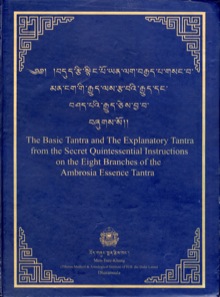
Introduction to Buddhist Ayurveda or Tibetan Medicine – Vata Dosha (Space and Air), Pitta Dosha (Fire and Water), Kapha Dosha (Water and Earth) — Lectures from the „Four Tibetan Medical Tantras“ („rGyud – bzhi“ in Tibetan, pronounced „Ju Shee“ — „Si-Bu-Yi-Dian in Mandarin — in Sanskrit it is called the „Amrta-hrdaya-astanga-guhyopadesa-tantra“ or Amrita Hridaya Astanga Guhyopadesha Tantra)
- >* VIDEO INTRO TO BUDDHIST AYURVEDA OR TIBETAN MEDICINE * <
- >* VIDEO Ayurveda Arthritis Chinese Medicine, Rheumatism …* <
Nalanda College of Buddhist Ayurveda of Nalanda University, part of the 501(c)3 Non-Profit Religious Organization Medicine Buddha Wholistic Ministry – Anonymous American Buddhist Monk of Geluk Nalanda Tradition of Tibet and India, Ayur-Vedic Herbal Medicine Practitioner (http://www.Ayurveda-Berkeley.com – 510-292-6696 in Berkeley, California)AYR220 Ayurvedic Consultation 001 Constitutional Medicine Tibetan Medicine Ayurveda Intake-Form (October 26, 2008)
Dr. Florian Ploberger, Wien , Lehrtätigkeit und Publikationen in den Themenbereichen TCM und Tibetische Medizin seit 2000 im Bacopa Bildungszentrum. Leiter des Wissenschaftlichen Beirates des Bacopa-Bildungszentrum in Oberösterreich sowie Präsident der Österreichischen Ausbildungsgesellschaft für Traditionelle Chinesische Medizin (ÖAGTCM).
BUCHTIPP: > Wurzel-Tantra & Tantra der Erklärungen des rGyud-bZhi , die vier Tantras der Medizin < (The Basic Tantra and The Explanatory Tantra from the Secret Quintessential Instructions on the Eight Branches of the Ambrosia Essence Tantra.) Dieser Text dient seit dem 12. Jahrhundert als Grundlagentext in der Ausbildung der tibetischen Mediziner und wird noch heutzutage auswendig gelernt.
2007 wurde er an den Men-Tsee-Khang (Schule für tibetische Medizin und Astrologie unter der Schirmherrschaft des XIV. Dalai Lama in Dharamsala, Nordindien) eingeladen, um dort Vorträge zu halten.
Zurzeit hält er wöchentlich an der Universität Wien eine Vorlesung über diverse Themen der Tibetischen Medizin und verbringt jedes Jahr mehrere Monate in Dharamsala.
Zu seiner grossen Freude und Ehre wurde er im Sommer 2009 offiziell von Dr. Dawa, dem Direktor des Men-Tsee-Khang, mit der Übersetzung der ersten beiden Teile des bedeutendsten Werkes der tibetischen Medizin: ( rGyud-bZhi*. Deutscher Titel: Vier Tantra der Medizin) beauftragt.

> Pulsdiagnose, die sanfte Botschaft des Körpers <
In diesem Buch werden tiefe Einblicke in die Kunst der Pulsdiagnostik gewährt. Die Autoren beschreiben die Pulsdiagnostik aus Sicht zweier verschiedener traditioneller, östlicher Medizinsysteme: der ayurvedischen und chinesischen Medizin.
Für eine korrekte Diagnostik ist die Pulstastung von entscheidender Bedeutung. In diesem praxisorientierten Buch werden alle wichtigen Aspekte des Pulses unter dem Blickwinkel der verschiedenen Krankheitsmuster dargestellt. Es vermittelt die Technik der Pulstastung sowie die klinische Bedeutung der klassischen Pulsqualitäten.
Die Vorteile für Sie:
- Pulsdiagnostik in 2 verschiedenen Medizinsystemen
- Starker Bezug zur Praxis
- Graphische Darstellung aller Pulsqualitäten
-
Dieses Buch dient sowohl Einsteigern als auch erfahrenen Therapeuten als wichtige Informationsquelle.
Die Autoren dieses interkulturellen Werkes sind:
- Frau Dr. Vinod Verma arbeitet und lehrt als Ayurvedischen Ärztin in Europa und Indien.
- Dr. Florian Ploberger ist Arzt für Allgemeinmedizin und Traditionelle Chinesische Medizin in Österreich.
Mahayogi, Yogacharya, Guru Gorakhnath
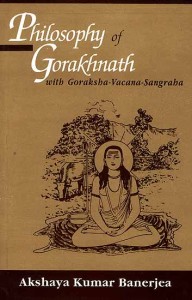
MAHAYOGI YOGACHARYA GURU GORKHNAHT JI AADESH AADESH .
BY MR . VISHAWAJEET SING JI
> HATHA YOGA AND THE MEANING OF TANTRA <
AADESH AADESH ,
MAHAYOGI ,YOGACHARYA ,GURU GORKH NATH JI
However, great Yogis such as Gorakshanath are following the system of Sadanga Yoga which has been stated by him in his book Goraksha Paddhati 1.7. This System avoids Yamaand Niyama. The justification given by those Yogis is that if you obtain mastery in meditation, your whole lifestyle gets changed in such a way, that you automatically start following the Yama and Niyamawhich are the necessary rules and individual rules of conduct respectively. These six aspects of Yoga are:
- Physical Postures
- Pranayama
- Pratyahara
- Dharana
- Dhyana
- Samadhi
2. According to the Nath Cult it is most important that the aspirant should purify his body completely. This has been stated in detail in Gheranda Samhita l.10-11-12. This is a total purification of all important and vital organs of the body such as stomach, small intestines, large intestines, nasal passage, food pipe, eyes, cars, throat, etc. After this the cult says that the aspirant is in a position to undertake all the steps of Yoga. In Patanjali’s Yoga Sutras this preparation of initial background is not mentioned.
3. The next step (in other Yoga systems) is the learning of physical postures. However, after learning all the important postures, the aspirant has to practise the most essential posture viz. Siddhasana or Vajrasana. For all the future Sadhanas this is considered to be the basic and important posture. The detailed description of this posture is given by Jnaneshvara in his sixth chapter of Jnaneshvari and also by a number of books of Nath Cult. They say that this posture is a must for all the aspirants. However, Patanjali says that you can sit in any convenient posture you like. Hence he gives the Sutra „Sthira-sukham asanam.“
4. The importance of a Guru or Master is maximum in Nath cult. Their every book or Shastra starts by remembering or bowing with great reverence and respect to the Guru Adinath or Shiva or Shankara. Jnaneshvari also starts like this by saying „Om Namoji Adya.“ This importance is not given to Guru in Patanjala Yoga Darshana.
5. The Nath cult says that the human body consists of certain most essential centres or vital points and voids (Akasha). (8) Every aspirant has to know and understand these things. They say that one who is not aware of these essential centres is not a Yogi. They are six Chakras, sixteen vital points, two Laksyas (concentration points), five voids, all situated within the human body. Such type of discussion is not found in Patanjala Yoga Darshana.
6. Nath cult says that the human body is just like a beautiful house which is having nine doors. It is formed out of five essential elements and each element is having its own deity. The nine openings are two eyes, two nostrils, two ear holes, mouth, excreta outlet, and sex organ. The deity of Earth is Brahma, of water is Vishnu, of fire is Rudra, of air is Ishvaraand of space is Sadashiva. Every aspirant has to understand these things. In Patanjala Sutras we do not find this.
7. The Nath Panth, in their various books as mentioned above, gives a detailed description of the seven chakras, their exact location in the body, their properties and functions etc. Jnaneshvara has not given the description of these chakras for the reason that he wanted to restrict his interpretation to the verses of Bhagavad-Gita. At the base of the spinal cord and at the centre of the line which connects sex organ and the excreta outlet is situated the first chakra which is known as Muladhara Chakra. Slightly above the sex centre and below the naval centre the second chakra is situated which is known as Svadhisthana Chakra. The third is situated near the naval centre and is called Manipura. The fourth one is situated near the heart centre and is known as Anahata Chakra. The fifth is situated at the throat centre and is known as Visuddha Chakra. It must be noted that all these chakras are situated in the Shushumna Nadi which passes through the spinal cord, which again passes through Vertebral Column. These are extremely subtle points and may not be structural and cannot be located by any sophisticated instrument available. These were actually ‚observed‘ and seen by the great Rishis in the stage of Samadhi. Here come the limitations of modern science. The sixth chakra is situated on the forehead and between the centre of the two eyebrows. This is known as Ajna Chakra. The seventh and the last chakra is situated in the centre of the brain in its uppermost portion. Patanjali does not mention any such thing in his Yoga Sutras.
8. According to Nath Cult there are 72.000 nerves in the body of human beings. Out of these ten Nadis are important. Out of these three are most important. They are known as Ida, Pingula and Shushumna. Ida is known as Chandra Nadi and is passing through the left side of the vertebral column. Pingula is known as Surya Nadi and is passing through the right side of the vertebral column. Shushumna Nadi is passing through the spinal cord and is known as Agni Nadi. Patanjali’s Yoga Sutras do not mention all this. He does mention a few Nadis like Kurma Nadi. But the detailed description is absent.
9. The concept of Prana has been studied in maximum details in Nath Cult. They say that in the human body there are ten different types of air or Vayus , which are known as Prana, Apana, Samana, Udana, Vyana, Naga, Kurma, Krikala, Devadatta and Dhananjaya. Each one is situated in a specific part of the body. Each one is having specific purpose and function in the body. When we take the air inside our body, it gets bifurcated into ten branches. This is just like a stream of water which starts from the Himalayan Mountains and gets bifurcated into several branches and each branch becomes a river and is given a separate name. Present medical science is not in a position to locate these ten different types of airs. However, our ancient Yogis have actually ’seen‘ these different streams of air inside our body. This type of description is not found in Patanjala Sutras.
10. When we breathe in there is a subtle sound which is known as ‚So‘ and when we breathe out there is a subtle sound which is known as ‚Ham‘. Everyone can experience this with slight practice. This sound of ‚Soham‘ is continuously going on with every breathing. In a period of one day, that is twenty-four hours, we take 21.600 breathings. That means this type of sound which is known as Mantra, is being continued in our body for that many number of times (21.600). If the aspirant observes this mentally and consciously, this becomes a great Sadhana. This Sadhana is being given very great importance in the Nath Cult. This is not found in Patanjala Yoga Sutras (PYS).
11. The most important aspect of the Yoga Sadhana of Jnaneshvara is the activation of the Kundalini Shakti. This is a Tantric Sadhana of the Nath Cult. Jnaneshvara has given a detailed account of this process in his sixth chapter. This is a practical application of the philosophy of Nath Panth. They say that the whole universe is created out of the energy of Shiva or Mahashiva or Adinatha. They call it Shakti or cosmic energy. This energy is occupying the whole universe. The smallest portion of this energy is known as Kundalini, and the energy which is present in the entire universe is known as Maha Kundalini. This energy is present in human beings in potential form (Supta Shakti). The Yogis who have experienced this energy, say that this is like a serpent and is situated at the end of the Shushumna Nadi in a coiled form, in three and a half coils, position. This also is in line with their philosophy which says „Bramhandi te Pindi“. This means that whatever exists in the universe also exists in the human being in the subtle form. Nath Cult and their great masters like Gorakshanath have devised various ways and means to activate this energy. Saint Jnaneshvara has described one method of activating this energy. This method has been stated in almost all the books of Hatha Yoga and Natha Panth and some Upanishads. The detailed description is available in the sixth chapter of Jnaneshvari.
This energy can also be activated by Mantra Yoga, Laya Yoga and Bhakti Yoga. That is why we find in Jnaneshvari all these systems of Upasana.
The ultimate stage of realisation or Moksha as per this colt is the union of Shakti with Shiva. Hence the aspirant initiated in this cult has to activate this energy and allow this energy to go through all the six chakras gradually. The place of Shiva is considered to be in the last chakra which is known as Sahasrara. In the ultimate stage, Sadhaka has to transfer this energy to this last chakra. This is supposed to be the point of union of Shakti with Shiva. One who is successful in this process, is supposed to be a great Yogi. A number of spiritual powers known as siddhis are at his disposal in that stage. A number of examples are available in the ancient Shastras about the Yogis, who were successful in obtaining this highest stage. Jnaneshvara had experienced the above union with Shiva and hence he is known as Maha Yogi. In PYS we do not find anything about Kundalini Shakti.
12. In Nath cult there is a great importance of a Gun or Master. He is given the same importance as is given to their ultimate Guru Adinath. That is why Jnaneshvara is giving maximum importance to his Guru Nivrittinath and is mentioning his name in Jnaneshvari at a number of places. Not only that, he gives the entire credit of writing this book to Nivrittinath. Their philosophy says that the aspirant can get the ultimate experience of truth or Shiva only with the continuous guidance of Guru or the Master. We find that every book of Nath Panth starts after bowing to Guru.
13. In this cult we find a mystic and esoteric act of the transfer of spiritual energy from the master to the initiated aspirant and the act is known as Shaktipata. With the tremendous powers of the master, he can activate the Kundalini energy of the disciple. This transfer, he can do by touching a specific part of his body or simply by looking at him. This transfer of energy can be done on the aspirant who is at a great distance from the master. This is a peculiar mystical act. After the transfer of energy, the aspirant experiences a number of supernatural things, a tremendous flow (of liquid) light, etc. However, those scholars who are really anxious, should go through the book Awakening of Kundalini written by Pandit Gopi Krishna, who had undergone all these experiences before about twenty-five years in Kashmir. The concept of Shaktipata is not found in PYS.
14. This cult gives a great importance to the practice of certain physical postures known as Mudras. They are useful in meditation and also in the activation of Kundalini energy and the six chakras. Hence every aspirant has to learn these Mudras. The ancient texts say that such Mudras arc twenty-five. Out of these ten are most important. With the practice of Mudras the aspirant is in a position to get rid of any and every disease and can acquire a number of supernatural powers. Because of these multiple advantages, the aspirant is taught these postures and afterhe achieves this experience, he is taught Pranayama. Mudras arc nowhere mentioned in PYS.
15. There is a difference between the Dhyana-meditation of Patanjali and Jnaneshvara. Patanjali gives the definition of Dhyana as per Sutra No. III.1 and III 2 which are as under. The aspirant has to concentrate on specific or vital part of the body or on some external point. This process is known as Dharana. When the aspirant gets success in the concentration on that particular point, for a sufficiently long time, it becomes a Dhyana. For the concentration on that particular point, the aspirant has to use his mind. However, in Kundalini Yoga, the aspirant has not to use his mind at all. He has to practise Kumbhaka, wherein the function of mind totally stops. Instead of concentrating on any particular point, the aspirant has to activate the Kundalini energy. This is a much superior way. This opinion has been confirmed by Sir John Woodroffe, in his book The Serpent Power on page No. 314 and 315 of the eleventh edition, which the learned scholars and philosophers can refer to any time.
16. Patanjali gives a broad division of Samadhi, which is termed as SamprajnataSamadhi and Asamprajnata Samadhi. However, the stage of Samadhi has been studied in details by the Nath cult and which is followedby Jnaneshvara in toto. Nath cult has categorised Samadhi in six types which are known as I ) Dhyana Yoga Samadhi, 2) Nada Yoga Samadhi, 3) Rasananda Yoga Samadhi, 4) Laya yoga Samadhi, 5) Bhakti Yoga Samadhi, and 6) Raja Yoga Samadhi. How each Samadhi can be experienced is also discussed in details. Scholars and philosophers can refer chapter seven of Gheranda Samhita which gives the entire description.
To conclude, I would like to state that both these systems of Yoga are different. The reason is obvious. Their philosophical base is altogether different. That is why the Yoga of Nath Panth accommodates Hatha Yoga, Kundalini Yoga, Mantra Yoga, and Bhakti Yoga. This Yoga Philosophy is therefore multi-dimensional. Besides the results here are very fast. This has been promised by Gorakshanath in his book. However, it is advisable that the practices of this Yoga should be undertaken under an able and experienced master.
To end the paper, I would like to quote the verse No. IV.114 from Hatha Yoga Pradipika. It says that till you are not in a position to activate the Kundalini energy, till you are not in a position to have perfect control over your pranic force, till you are not in a position to clear the path of Shushumna Nadi, all your knowledge is external, futile and full of ego. It is only an exercise of talking and nothing else. Hence he says that this is a process which has to be experienced only.
References
- Jnanesvari by Sakhare Maharaj.
- Goraksa-paddhati by Gorakshanath.
- Gheranda Samhita – Commentary by Shree Swamiji Maharaj.
- Hatha-yoga-Pradipika by Shree Swatmarama Yogi
- Patanjala Yoga (Sutra) Pradipa by Swami Omananda Tirtha.
- Patanjala Yoga Darsana by K.K. Kolhatkar
- Yoga Yajnavalkya
- Siddha-Siddhanta-Paddhati by Gorakshanath
- Shiva-Samhita – Commentary by Dr. K.R. Joshi
Dein Ayurveda Net, > svadhyaya < , Articles:
SONGS ON YOGA of the MahÄ�rÄ�ṣṭrian NÄ�th Yogis
> Shri Jnandev’s Anubhavamrut: The Immortal Experience of Being <
( One of the Mystic Poet´s of Mahasastra )
> GORAKSHANATH – Origin of Hatha Yoga <
> THE MEDEVIAL SAINTS OF INDIA <
www.proyoga.de – Meine wissenschaftliche Arbeit
Zur Zeit des indischen Mittelalters wanderten in weiten Teilen Indiens und Tibets tantrische Mystiker umher, die Nathas, Nathayogis oder Nathasiddhas genannt wurden. Sie praktizierten und lehrten Hatha- und Kundaliniyoga und hatten großen Einfluss auf das religiöse Leben der Menschen.
In meiner Doktorarbeit habe ich die Lehren und Praktiken dieser Yogis untersucht. Als Textgrundlage dient hierbei ein Werk aus dem ca. 13. Jahrhundert, das Vivekadarpana, wörtlich ‚Spiegel der unterscheidenden Betrachtung‘. In diesem recht umfangreichen Werk (21 Kapitel) wurden die Lehren aus unterschiedlichen philosophischen Schulen, Konzepte und Praktiken diverser tantrischer und yogischer Traditionen, sowie viele mythologische Vorstellungen zusammengetragen.
Die in diesem Werk behandelten Themen sind u.a. ‚das Absolute Bewusstsein‘, ‚die Einzelseele‘, ‚der feinstoffliche Körper‘, ‚die Mikro-Makrokosmos-Korrelation‘, ‚die Guru-Schüler-Beziehung‘, ‚der Siddha‘, ‚der Hatha-Yoga‘, etc. Da sich das Vivekadarpana an den Sadhaka, also den praktizierenden Yogi, richtet, ist es jedoch nicht nur ein philosophisches Werk, denn nach Auffassung der Nathayogis vermittelt Information allein noch keine Erkenntnis oder Einsicht, ganz zu schweigen von einer Transformation des Menschen zum höchsten, allumfassenden Bewußtsein, dem angestrebten Ziel der Nathayogis. Daher ist das Vivekadarpana auch ein praktisches Yogalehrbuch, in dem Ratschläge und Anweisungen zur Yogasadhana (spirituelle Praxis) ihren Platz haben.
Meine Doktorarbeit ist bei der Universitätsbibliothek Heidelberg elektronisch veröffentlicht. Mit der Adresse www.ub.uni-heidelberg.de/archiv/2113 gelangen Sie auf die Hauptseite meiner Veröffentlichung. Hier werden Sie u.a. den Titel und eine kleine Zusammenfassung meiner Arbeit in Englisch und Deutsch vorfinden. Die Doktorarbeit selbst befindet sich in den aufgeführten 32 pdf-Dateien, die Sie downloaden können.
Kashmir Shaivism and the Natha Tradition is related.
by > Matsyendra Nath < :
A number of Indian scientists and Nathas believe that in a system Krama the guru Maheshvarananda, known for his text „Mahartha-manjari“, is Gorakshanath, who is a founder of the Natha Tradition. Besides, everyone knows that Abhinava Gupta mentions Matsyendranath (who is the guru of Gorakshanath) ein Sri Tantraloka as his guru. He also mentions Shambhunath in Tantra-sara as his guru. Shambhunath is not only the main guru of Abhinava Gupta, but he is also known as a guru in the Natha Sampradaya. Kashmir Shaivism synthesized in itself a lot of tantric and shakta methods that had found their place in the Natha Tradition. Guru Gorakshanath also put an emphasis on the inner essence of these teachings, seeing in them a unity of their mystical experience.
Abhinava Gupta as like Gorakshanath, taught one method or the exact methods without method „anupaya”. All other „upayas“ is agents for different types of practitioners. Nathas have the same, all the texts say that there is no Raja Yoga without Hatha and vice versa, there is no difference between Shiva and Shakti.
According to the terms the Nathas much borrowed from Siddhanta of Kashmir Shaivism. Probably, many followers Kashmir Shaivism migrated from Kashmir, dissolved in shakta, natha and buddhist schools. As in the Kashmir Shaivism, in the tradition of Gorakshanath each following tattva contains that from which it emerged itself. Five Shakti, described in one of the major works of Natha Sampradaya (Siddha-Siddhanta Paddhati), identical to those of Shakti, which are described in the tradition of Kashmir Shaivism: Nija-sakti is Chitti-shakti, Para-shakti is Ananda-shakti, Apara-shakti is Ichchha-shakti or Sadashiva tattva, Sukshma-shakti is Jnana-shakti or Ishvara tattva, Kundalini-shakti is Kriya-shakti or Shuddha-Vidya tattva. Three „upayas“ can be correlated as follows: anava with the mantra-yoga and hatha-yoga, shakti with laya-yoga, and shambhava with raja-yoga. The difference is that instead of detailed analysis Suddha and Suddha-ashuddha tattvas the Nathas pay more attention to the theory of the body of Vishesha-purusha and Vyashti-Pinda, but on the other hand, the theory of 6 tattvas is acceptable to nathism.
The > Pratyabhijnya < very close to a doctrine of Nathas, many gurus say that nathism once dissolved and kept in itself a lot of Kashmir Shaivism, such as the principle of Nirupaya by grace (anugraha) of Guru or by shaktipat, etc.
SONGS ON YOGA: texts and teachings of the MahÄ�rÄ�ṣṭrian NÄ�th Yogis: Welcome to the Department of Indian and Tibetan Studies at the Asien-Afrika-Institut
The Asien-Afrika-Institut, situated in the heart of the city, provides students and researchers with ideal circumstances in which to study a multitude of languages and cultures. Read More: > HERE < ,
Puja Net, (free) Audio Library, Yagya Group
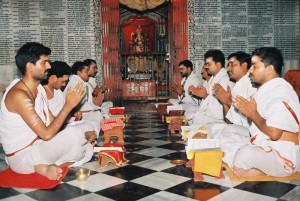
* AUDIO LIBRARY (Lakshmi Mantras) *
> VEDA, VEDIC SCIENCES, PANCHANGAM <
> THE 12th BAVA VEDIC ASTROLOGY CONFERENCE <
PūjÄ� (Devanagari: पूजा) (alternative transliteration Pooja, Sanskrit: reverence, honour, adoration, or worship) is a ceremony of gratitude or a religious ritual performed as an offering to various deities, distinguished persons, or special guests. It is done on a variety of occasions and settings, from daily puja done in the home, to temple ceremonies and large festivals, or to begin a new venture. Puja is modeled on the idea of giving a gift or offering to a deity or important person and receiving their blessing. The two main areas where puja is performed is in the home and at public temples. There are many variations in scale, offering, and ceremony. Puja is also performed on special occasions such as Durga Puja and Lakshmi Puja. Puja or Pooja is also a Hindu female first name. Read More: > HERE <
In Hinduism, Yajña (Sanskrit यज्ञ yajña; also anglicized as Yagna, Yagya or Yadnya) is a ritual of sacrifice (Monier-Williams gives the meanings „worship, prayer, praise; offering, oblation, sacrifice“) derived from the practice of Vedic times. It is performed to please the gods or to attain certain wishes. An essential element is the sacrificial fire – the divine Agni – into which oblations are poured, as everything that is offered into the fire is believed to reach the gods. As the name of the service, the term Yagna is linguistically (but not functionally) cognate with Zorastrian (Ahura) Yasna. Unlike Vedic Yajna, Zoroastrian Yasna has „to do with water rather than fire“ . Read More: > HERE <
The Yagya Group was formed by Ben Collins and Sri Narasimha Bhattar following a trip to India in 1998. After enjoying several weeks of traditional Hindu yagya ceremonies, we returned and found that a surprising number of people in America were interested in access to effective and affordable yagyas. So we began offering them monthly, sharing the costs amoung the sponsors and donating the proceeds to the Venkateshwara temple in Malibu, California.
As the group expanded we wanted to be able to offer a wider variety of yagyas and use more priests. So we were fortunate enough to purchase a facility in Kanchipuram, a wonderful temple town south of Madras. With that, we were able to offer a greatly expanded variety of yagya services. Seetharam was planning to move to India and so we were fortunate to be able to have him manage all the puja.net yagyas in person.
With the new facility and Seetharam’s on-site presence, we currently offer yagyas every single day of the month in Kanchipuram!
Not surprisingly, the group has expanded to include participants from around the world; US, Europe, Scandanavia, South America, Africa, Australia and New Zealand. The group continues to grow on the basis of the consistent results that the yagya performances bring.
Please address your comments, questions, or requests to me via email.
Our mission is to make yagyas available in a way that is as close to the timeless traditions of the Vedas as is possible. With that in mind, our mission standards are:
-
All yagyas will be performed in the most traditional and authentic manner possible, without regard to cost or time considerations.
-
All yagya services will be priced so that they are within financial reach of any individuals who wish to participate. The price of the yagya service should bear a direct correlation to the cost of performing the yagya.
-
Service, not profit, is the driving motive behind puja.net.
-
Our sponsorship of yagyas is intended not only to result in positive benefit for ourselves. Through our participation, we honor and preserve the Vedic traditions in India, and provide meaningful employment for highly qualified priests.
SRI ADI SANKARA, Yoga, Books, Arts, Studies
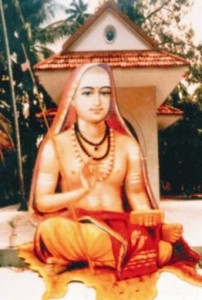
> KAMAKOTI PEETHAM (founded pers. by Sri Sankara) <
> SRI SANKARA UNIVERSITY OF SANSKRIT <
> The Biography by Swami SIVANANDA <
> BHAGAVAD-GITA, commentary of Sri Sankaracharya (1901) <
> KAMAKOTI Go Green Solar Power Project <
Adi Shankara ( DevanÄ�garÄ�: आदि शङ्कर, Ä�di Śaṅkara, pronounced [aːdi ɕaŋkərə]); (788 CE – 820 CE), also known as Śaṅkara BhagavatpÄ�dÄ�cÄ�rya and Ä�di ŚaṅkarÄ�cÄ�rya, was an Indian philosopher who consolidated the doctrine of Advaita Vedanta, a sub-school of Vedanta. His teachings are based on the unity of the soul and Brahman, in which Brahman is viewed as without attributes. He hailed from Kalady of present day Kerala. Shankara travelled across India and other parts of South Asia to propagate his philosophy through discourses and debates with other thinkers. He founded four mathas („monasteries“), which helped in the historical development, revival and spread of Advaita Vedanta. Adi Shankara is believed to be the organizer of the Dashanami monastic order and the founder of the Shanmata tradition of worship.
His works in Sanskrit, all of which are extant today, concern themselves with establishing the doctrine of Advaita (Nondualism). He also established the importance of monastic life as sanctioned in the Upanishads and Brahma Sutra, in a time when the Mimamsa school established strict ritualism and ridiculed monasticism. Shankara relied entirely on the Upanishads for reference concerning Brahman and wrote copious commentaries on the Vedic Canon (Brahma Sutra, Principal Upanishads and Bhagavadgita) in support of his thesis.
The main opponent in his work is the Mimamsa school of thought, though he also offers some arguments against the views of some other schools like Samkhya and certain schools of BUDDHISM that he was familiar with. Read More: > HERE <
Scholastische Phase des Yoga
Diese Phase beginnt mit Shankaracharya (788-820 n. Chr.), der den Vedanta systematisierte und die besten Teile von Samkhya, Yoga und Buddhismus in den Vedanta integrierte. Nach ihm kamen andere Lehrer, die das Prasthana-Trayam anders verstanden, und konkurrierende Vedanta-Schulen gründeten. Advaita-Vedanta – diese von Shankara vertretene Auslegung sieht alle wahrgenommenen Unterschiede der phänomenalen Welt als unwirklich an. Alles was existiert ist nichts anderes als Brahman; doch Brahman hat keine Teile oder Unterschiede in sich. Die wahrgenommenen Unterschiede sind wie eine Fata Morgana. Mehr Lesen/Read More: > Here <
Adi Sankaracharya’s Soundarya Lahari, Translated by P. R. Ramachander: Introduction: Soundarya Lahari meaning waves of beauty consists of two parts viz. Ananda Lahari meaning waves of happiness (first 41 stanzas) and Soundarya Lahari(the next 59 stanzas). It is believed that Lord Ganesha himself has etched the Ananda Lahari on Mount Meru(Some people believe that Sage Pushpa Dhantha did the etching).
It was read from there by Sage Gouda Pada who taught it to Adhi Sankara. Adhi Sankara himself added the rest of the 59 stanzas and completed it.
These 100 stanzas are supposed to be the foremost among Manthra literature. It is also believed that by Making suitable Yanthras ( in west also known as „mandalas…“) and reciting particular stanzas and worshipping the yantras almost anything can be obtained in the world .
- Download at VEDANTA BHERI : >HERE <
- HYMNS ON SANKARA at bhagavadgitausa: >HERE<
- A new light on Adi Sankara, : > HINDU ON NET <,
- HINDU ON NET: > Soundarya Lahari chanting in Bangalore <
- Sankara im Deutschen > Kirchen Lexikon <
There are more than 36 commentries to Soundarya Lahari written in Sanskrit itself. Of them the most famous is that written by Lakshmi Dhara alias Lalla, His commentary is used to understand the meaning of the different verses. Though there are large number of translations and commentaries of Soundraya Lahari available this is perhaps the first time an attempt is made by a mere novice to translate them in to English verse. The aim is to bring to the notice of the devotes who know English better than other languages , the majesty of the medium of worship called >Soundarya Lahari<. A transliteration in roman script is also given. May all those who read this be drenched forever by this “Wave of happiness”.
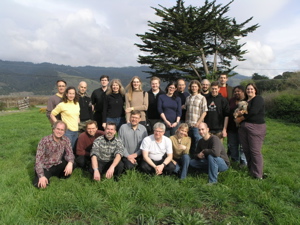
The Internet Archive San Francisco:
The Internet Archive is a 501(c)(3) non-profit that was founded to build an Internet library. Its purposes include offering permanent access for researchers, historians, scholars, people with disabilities, and the general public to historical collections that exist in digital format. Founded in 1996 and located in San Francisco, the Archive has been receiving data donations from Alexa Internet and others. In late 1999, the organization started to grow to include more well-rounded collections.
Now the Internet Archive includes texts, audio, moving images, and software as well as archived web pages in our collections, and is working to provide specialized services relating to training, education, or adaptive reading or information access needs of blind or other persons with disabilities.
Extraordinary Personalities Reflect On The Bhagavad-Gita: > HERE <
Albert Einstein, Mahatma Gandhi, Dr. Albert Schweizer, Aurobindo, Carl Jung, Prime Minister Nehru, Herman Hesse, Vivekananda, Ralph Waldo Emerson, Paramahamsa Yogananda, Rudolph Steiner, Adi Shankara, Aldous Huxley, Ramanuja, Bhaktisiddhanta Saraswati Srila Prabhupada, Baladeva Vidyabhusana, Madhvacarya, and Sri Caitanya Mahaprabhu.
Bhaja Govindam is a very popular 8th century Hindu devotional composition in Sanskrit composed by Adi Shankaracharya. This work of Adi Shankara underscores the view that devotion to God, Govinda, is a vastly important part of general spirituality. This work is generally considered a good summary of Advaita Vedanta.
It is said that Shankara was walking along a street in Varanasi one day, accompanied by his disciples. He heard an old scholar teaching his grammatical rules. Taking pity on him, he went up and advised him not to waste his time on grammar at his age but to turn his mind to God in worship and adoration. The Hymn to Govinda was composed on this occasion. Besides the refrain of the song beginning with the words „Bhaja Govindam“, Shankara is said to have sung twelve verses, hence the hymn bears the title „Dvadasamanjarika-Stotra“ (A hymn which is a bunch of twelve verse-blossoms). The fourteen disciples who were with the Master then are believed to have added one verse each. These fourteen verses are together called „Chaturdasa-manjarika-Stotra“ (A hymn which is a bunch of fourteen verse-blossoms).
The refrain „Bhaja Govindam“ which defines the composition and gives it its name invokes the almighty in the aspect of Vishnu; it is therefore very popular not only with Sri Adi Shankaracharya’s immediate followers, the Smarthas, but also with Vaishnavas and others. There is a story attached to the composition of this Hymn. Please Note: Being a lady > M.S.Subbalakshmi < omitted few verse which are not included in this application.
LORD SIVA AND HIS WORSHIP BY SRI SWAMI SIVANANDA:
SRI PURAM – TANTRA RESEARCH CENTER
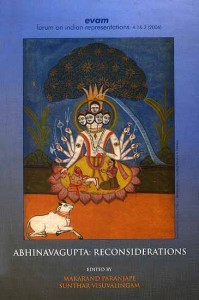
> ISHWAR ASHRAM TRUST BOOK´s <
>I.I.H.S. FREE BOOK DOWNLOADS <
(Abhinavagupta’s Commentary on the Bhagavad Gita)
Abhinavagupta (Kashmiri: अभिनवगुप्त) (approx. 950 – 1020 AD) was one of India’s greatest philosophers, mystics and aestheticians. He was also considered an important musician, poet, dramatist, exeget, theologian, and logician – a polymathic personality who exercised strong influences on Indian culture.
He was born in the Valley of Kashmir in a family of scholars and mystics and studied all the schools of philosophy and art of his time under the guidance of as many as fifteen (or more) teachers and gurus. In his long life he completed over 35 works, the largest and most famous of which is TantrÄ�loka, an encyclopedic treatise on all the philosophical and practical aspects of Trika and Kaula (known today as Kashmir Shaivism). Another one of his very important contributions was in the field of philosophy of aesthetics with his famous AbhinavabhÄ�ratÄ� commentary of NÄ�ṭyaśÄ�stra of Bharata Muni. Read more: > Here <
Tantra is that Asian body of beliefs and practices which, working from the principle that the universe we experience is nothing other than the concrete manifestation of the divine energy of the Godhead that creates and maintains that universe, seeks to ritually appropriate and channel that energy, within the human microcosm, in creative and emancipatory ways.
Shripuram Trust was established in the year 2006. We are located in a serene peaceful village, Madayikkonam near Irinjalakkuda in Thrissur District. Shri. L Girishkumar is the founder chairman of the trust. He is a well-known personality in spiritual as well as cultural circles. He is the disciple of Shri. Madhavji who was an acharya and a guiding light in the field of Tantra.
What is Tantra?
Tantra means technique-a technique for the fulfillment of desires. Man has no control over his desires. A desire is claimed as one’s own only after it comes to one’s mind. Desires are products of latent tendencies / vasanas. Through the fulfillment of the desires,‘vasanas’ are eliminated. Tantra provides the methodology whereby, through the fulfillment of one’s desires, liberation is attained. Liberation means understanding one’s own nature.From that understanding, one realizes that the world is nothing but the manifestation of the consciousness of which we are,but only a part. It is also a way of living which provides aesthetic enjoyment and knowledge. There is a shortage of proper understanding and practice of Tantra in today’s world. According to Abhinavagupta, a 10th century Tantra scholar who lived in Kashmir, Tantrasastra is the best among all sastras.(Dein Ayurveda Net:…. >„abhinavagupta“<)
The Objectives of the Trust
- The main intention of Shripuram Trust is to propagate the humanitarian aspect of Tantra in today’s world which is lacking in its understanding of this powerful Sastra.
- Our help is extended to those people who are genuinely interested in and are keen to understand and study Tantra in systematic manner.
- To preserve, we digitize manuscripts both palm-leaf and paper.
- For propagation, we study the manuscripts and try to revive the ancient rituals for the benefit of the mankind.
